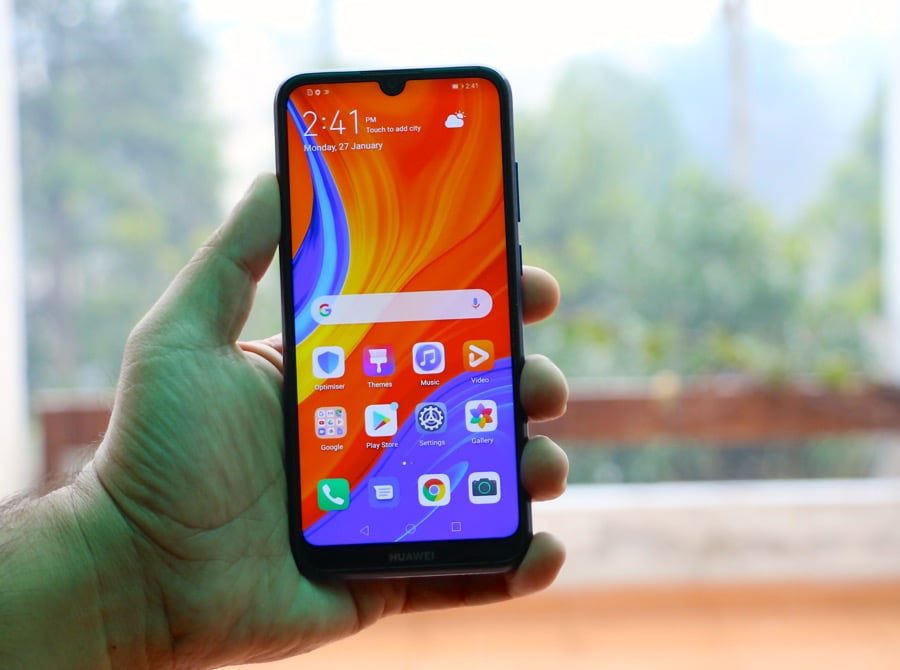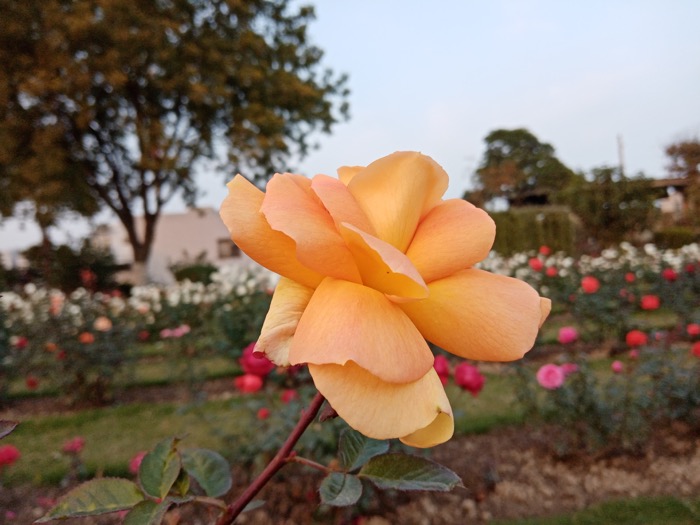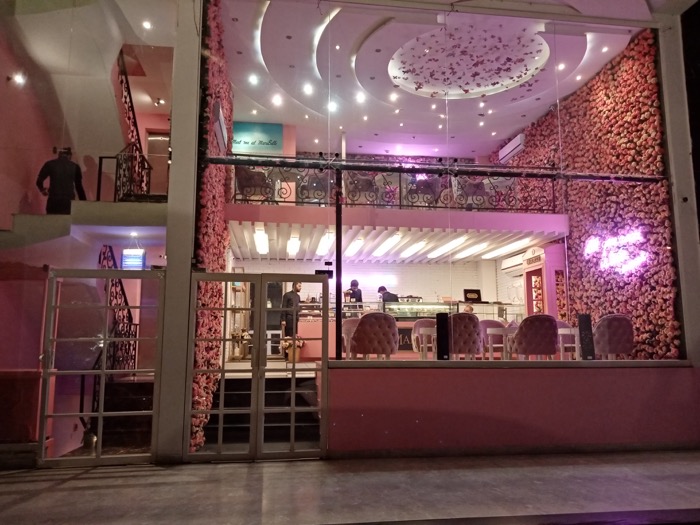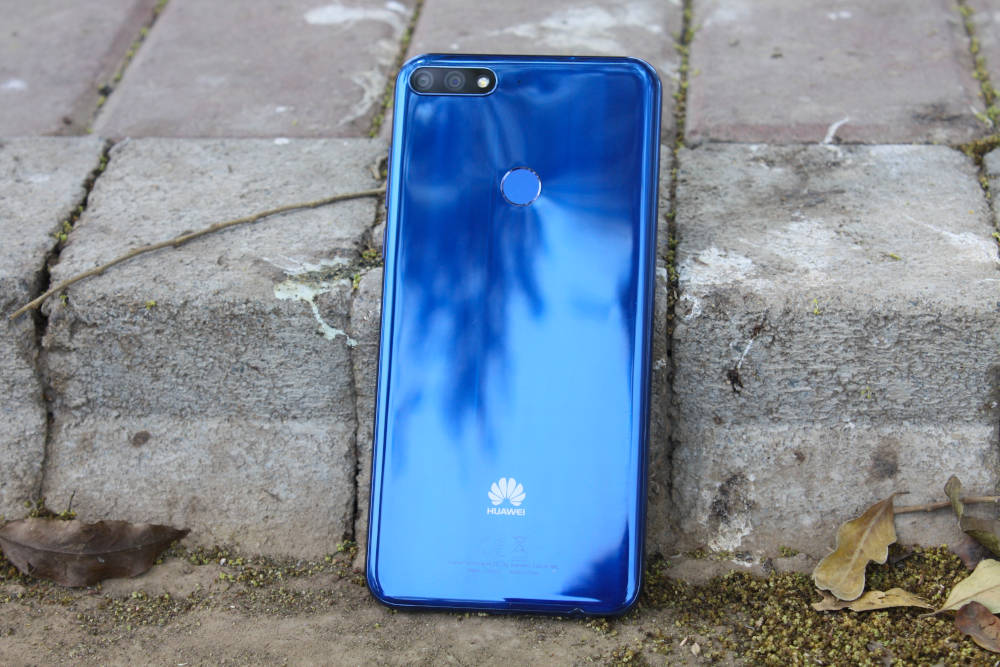The budget phone category has become very busy with ever-rising competition pushing brands to offer more specs at a lesser price. The latest is Huawei Y6s that is priced just under PKR 20K, a little more than 2018’s Y6 Prime, but better in hardware.
Let’s just take a look at its performance, if it is a decent entry-level phone or not.
Huawei Y6s specs
- Display: 6.09 inches, IPS LCD
- OS: Android 9.0, EMUI 9.1
- Chipset: Helio P35 (Octa-core)
- RAM/ROM: 3GB/64GB
- Camera (rear): 13MP
- Camera (front): 8MP
- Battery: 3020 mAh
Design and Display
Huawei Y6s is the successor to Y6 Prime 2019 and inherits a few of its traits. They both share a common screen size, a dewdrop notch, and on the major side, the camera setup. However, the back panel is a bit changed along with the chipset, and of course, the performance is also going to give us an entirely different result.
The rear panel on Huawei Y6s comes in two different nature-inspired colors, Orchard Blue – a glossy finish at the top, and matte-finished from the lower part, which is nearly 75% of the entire area. This is the part that mostly comes in contact with your hand, but it is the index finger that keeps wandering the glossy part where the fingerprint scanner is placed. So Huawei’s effort to resist the fingerprint impressions is only limited to the lower part. The other color option is Starry Black that shimmers with hidden reflective particles in the light and glitters, just like stars twinkling in the sky.

Just nearby the scanner, there is a single lens of 16MP along with an LED flash. Overall the feel in hand is quite sturdy, and the grip is good.
We get usual controls on the right and left sides in the shape of volume rockers, power keys, and SIM tray – which can entertain two nano SIMs and a micro SD card up to 512GB.
The top holds the audio jack and the microphone, whereas the bottom area shows a micro USB slot – a typical feature in this price range – and the two speaker grilles, though, only one can practically work.

The front of the phone shows varying bezel sizes that are smaller on the sides, marginally bigger at the top but significantly bigger at the bottom area. In spite of this, the chin does not look odd, and the entire focus remains on the large 6.09 inches IPS display that is 720×1560 px in resolution. The display is quite clear and vivid for a screen that offers only 283 PPI pixels density. It’s reasonable to look at and quite attractive for a budget phone. The contrast is decent, and the icons look sharp.
Outdoor visibility is also decent on this screen for normal functions other than watching a movie under the sunlight when it starts to lower the screen quality mainly during the darker scenes. For games and everything else, the visibility is surprisingly reasonable. It’s an adaptive display certified by TUV Rheinland, so you can expect it to put lower pressure on your eyes during longer gaming sessions.
The front screen also houses a notch for holding the front 8MP selfie lens. An earpiece and the notification light sit prominently just above the notch area.
Performance and Battery
Inside Huawei Y6s, the chipset is upgraded to an octa-core Helio P35 that earlier came with a quad-core Helio A22. Unfortunately, the phone has a similar GPU GE8320 that was installed in the earlier model, which is not a pretty refreshing update for the fans.
3GB RAM and 64GB internal storage look pretty tempting, and it can also be extended to 512GB through a microSD card. On the software end, this device carries the most commonly used custom layer EMUI 9.1 on top of Android 9.0, which, according to Huawei, is intelligently integrated with the hardware for better performance.
On AnTuTu, Huawei Y6s scored 98230, which is quite ahead of Samsung Galaxy A20 and A30’s 94190 and 94329.
Our internal testing reveals an average performance for day-to-day usage with a minor lag noticeable here and there, particularly at the time of switching apps when the cache is full. Otherwise, swiping through the home screens and app switching is a smooth sail. The phone can play PUBG at the lower setting, though you can experience intermittent frame drop despite an upgraded chipset.
The phone offers facial and fingerprint unlocking in addition to the conventional solutions which work comparatively faster than some of the entry-level devices we reviewed recently. We also noted it transferred files at a very reasonable speed both internally and externally.

Huawei Y6s features SuperSound that is decently loud for both indoor and outdoor entertainment. The bass and treble can give a rich experience and couple with the party mode – the built-in app – it can further enhance the overall sound experience on several occasions.
The phone is powered by a 3020 mAh of battery that can comfortably last for a day if the usage pattern is not aggressive. For gamers and social media savvy users, the average battery drain could reach 12 to 14% in an hour. Our video playback test fully discharged the battery in 11 hours and 29 minutes, which is better than the Samsung A20s drain time, courtesy 720p display of Y6s. The phone charged in 2 hours and 30 minutes.

User Interface
The phone comes with the most commonly available EMUI 9.1 on the market. It could be irritating for some people to see so many preinstalled apps when they first log in. Apps like NBP digital, Booking.com, and AliExpress could be useful for some, but most users would prefer to uninstall them. The phone, however, supports Linux-based EROFS file system technology that compresses the app for saving memory.
Huawei has improved the ‘Notepad’ much over the period that now offers a well-performing reminder notification for to-dos. The FM app inside is speedy in catching the stations, and the sound firing through the speaker gives a nice quality.

Huawei is slowly improving the AppGallery – perhaps a future replacement to Google’s Play store – that now offers certain recommended apps when you open it the first time. The interface of this app store is a little friendly now than what we used to experience a year before. Still, it is miles away from coming on par with its rival. However, the good news for Huawei fans is, the phone supports all the Google services that we are used to.
Camera
Huawei Y6s offers a single lens on the rear side, which is a 13MP sensor, and an 8MP lens on the front for selfies. Being an entry-level phone, the default app is limited to a really simple interface that does not offer dedicated modes for bokeh, portraits, etc. Though, you can still find Beauty, HDR, and Pro modes. The phone can record videos at 720 and 1080p resolution at 30fps through both lenses.
The camera performance of this phone is impressive in the daylight. Although it does not have a dedicated bokeh mode, the internal algorithm works well for closeup shots and differentiates the subject decently from the backgrounds, hence, creating a beautiful blur effect.

The ‘photo’ mode captures colors that are bold and vivid by default. The details are good for the close subjects in the daylight, although a little noise can be seen, which is not something out of proportion to spoil the scene.
Although an HDR mode is present, the standard mode can handle the darker and brighter areas just fine, and there is not much difference between the two images. Amazingly the Pro mode is very functional in this budget phone, which allows being a little creative with ISO, exposure value, and shutter speed.
At night, this single-lens phone performs better than what we expected before testing it. The well-lit buildings are shot just fine, though, a closer look reveals the grains all over. There are, however, very lesser complaints to make.
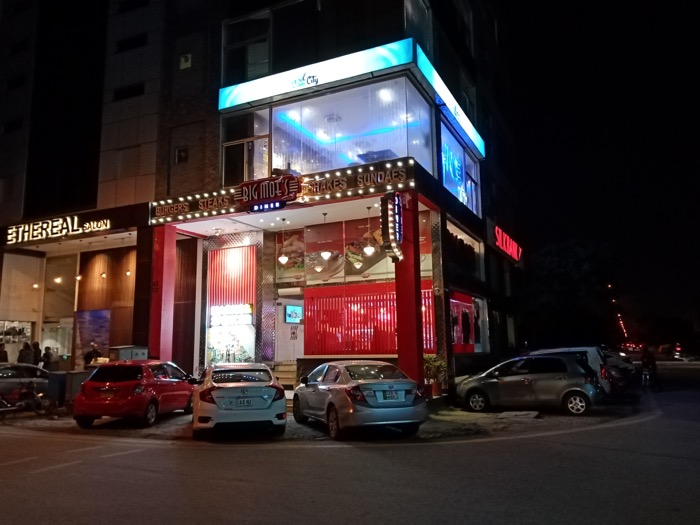
For selfies and portraits, the camera performs nicely. Skintone looks balanced, and facial details are also good, but with beauty mode on, it overdoes the effect and makes a face a little too treated.
In contrast to the day, the result of selfies and portraits depends upon the ambient light as low-lit areas at night can cause a lot of noise and loss of detail, even with the flash turned on.
Verdict
Huawei Y6s is a considerable improvement in performance from its predecessor. The device looks cool on hands, which is mainly because of its two-tone design and large screen in the Orchard Blue color. The camera is the area where this phone excels primarily in the daylight. However, we believe something still needs to be improved at the hardware level for smooth gaming performance.
Alternative
The overall performance of Realme C3 and Tecno Spark 5 Pro is better than Y6S and can thus be considered worthy alternatives for Huawei’s smartphone. Both smartphones fall in the same price range but Realme C3 does a better job in the battery department, making it a much more appealing choice.

